Nokia Lumia 1020 vs Lumia 925 vs Lumia 920
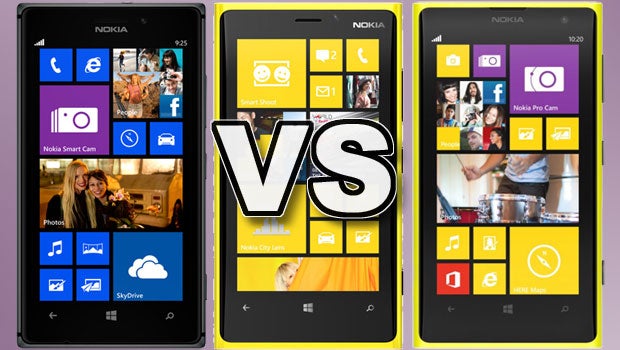
The Nokia Lumia 1020 is the new king of the camera-centric Nokia phones. However, is it really that much better than its direct predecessors, the Lumia 925 and Lumia 920?
We’ve compared the three, focusing on their camera tech but looking at all other aspects too, including software, power and design.
Camera
Lumia 1020 – 41-megapixel PureView, OIS, Xenon flash
Lumia 925 – 8.7-megapixel, OIS, LED flash
Lumia 920 – 8.7-megapixel, OIS, LED flash
Nokia’s top Lumia-series cameras tend to get lumped into one category – PureView. However, that term has ceased to mean anything all that specific. Nokia itself says it means only that the tech is ‘cutting edge’.
The cameras of the Lumia 925 and Lumia 920 are near-identical, but the Lumia 1020 camera is completely different.
The 9-series phones use a normal-sized 8.7-megapixel sensor, but have optical image stabilisation in order to let the phones use slightly longer exposures. This in turn allows for far better low-light photos, although fine detail tends to be a little soft and OIS cannot compensate for movement in the subject, only at your end.
When shooting in poor light conditions, anyone moving about will generally be reduced to a motion blur smudge with a Lumia 920 or Lumia 925.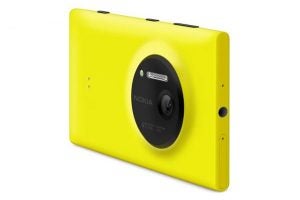
The Lumia 1020 takes a rather different approach. It has a much larger sensor, larger than any other camera you’ll find in phone shops – it’s even larger than the sensors of the Galaxy S4 Zoom and Galaxy Camera.
It’s a 41-megapixel 1/1.2” sensor that, when shooting ‘normal’ photos clumps together sensor pixels to mimic the performance of a ‘proper’ camera, which will generally have far larger sensor pixels than those of mobile phones.
You might ask – why doesn’t the Lumia 1020 camera sensor just use pixels that’ll give it the performance of a standalone camera, rather than a phone?
The main functional reason for using smaller sensor pixels is that it allows a whole new approach to digital zoom. Instead of cropping into images, as standard digital zooms do, the Lumia 1020 can ‘crop into’ the sensor in order to achieve what Nokia calls lossless zoom.
This is a slightly misleading term, as image quality will still be better in a non-zoomed image – where each image pixel is created using the output of a bunch of sensor pixels rather than a single one – but it does relay that the Lumia 1020 zoom is much better than just about any other phone zoom.
The Lumia 1020 also, like the Lumia 920 and Lumia 900, has optical image stabilisation. It doesn’t miss out on much at all, apart from needing to use a significantly larger camera housing.
To top off the camera supremacy, the Lumia 1020 uses a Xenon flash where the others have LED flashes. Xenon offers much more even coverage than LED, which is basically just a powerful little torch.
Design
Lumia 1020 – classic Lumia polycarbonate
Lumia 925 – plastic rear, aluminium sides
Lumia 920 – classic Lumia polycarbonate
The Lumia series’s top models were all about having smooth, seamless polycarbonate (plastic) bodied until the Lumia 925 arrived earlier this year. It has a plastic rear, but aluminium sides to give the series some of the hard, cool feel you get with metal phones like the HTC One.
It was a bold experiment that paid off – it’s a nice-feeling phone. It’s also the slimmest of the three. 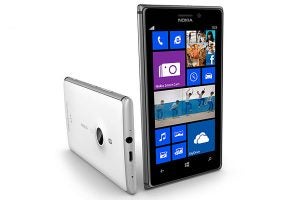
The other phones use the high-end plastic bodies that are the staple of the series. The Lumia 920 is distinctly chunky because it builds wireless charging into its body.
By itself, the Lumia 1020 is fairly slim, but should you want the phone to have the stamina of a standalone camera, you’ll need the battery grip accessory. This adds some bullk to the bottom of the phone, but increases battery life massively and gives you a comfy grip to hold onto when shooting photos.
Which is the best-looking? It’s a tough call, but we like the slimmer, lighter style of the Lumia 925 and Lumia 1020.
However, the plastic-bodied phones are a lot more colourful than the Lumia 925, which is only available in white and black/grey shades in order to fit in with the silver of the aluminium sides.
The Lumia 1020 comes in an additional bright yellow (as well as white/black) while the Lumia 920 comes in all those shades plus red.
Screen
Lumia 1020 – 4.5-inch AMOLED, 1,280 x 768 pixels
Lumia 925 – 4.5-inch AMOLED, 1,280 x 768 pixels
Lumia 920 – 4.5-inch IPS, 1,280 x 768 pixels
The three screens of these phones are very similar in most respects. They are all 4.5 inches across and have a resolution of 1,280 x 768 pixels. This resolution is significantly lower than the 1080p used by today’s top 5-inch-odd phones, but it’s enough to make text appear nice ‘n’ sharp.
Most Lumia phones use AMOLED screens, as do the Lumia 1020 and the Lumia 925. However, the Lumia 920 is a little different.
That phone uses an IPS display, similar to the screen seen in the iPhone 5.
All three are top-quality screens that Nokia has given its ClearBlack branding – which essentially means Nokia has done its best to maximise contrast and clarity. 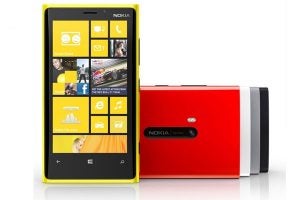
There are clear differences in the display style of the two technologies, though. AMOLED displays have vivid colours that can appear oversaturated.
Put the three side-to-side and there’s a good chance that, like us, you’ll prefer the more natural colours of the IPS Lumia 920. However, the other phones do give you some control over the saturation and colour temperature of the screens, letting you minimise this effect.
What the Lumia 1020 and Lumia 925 screens do supply over the Lumia 920 is excellent contrast. OLED displays – in theory at least – have just-about infinite contrast.
This becomes noticeable when viewing the phone in a darkened room, where the backlight of the Lumia 920’s IPS display will make black areas appear a little grey.
CPU and Power
Lumia 1020 – Dual-core 1.5GHz Krait (via S4 SoC), 2GB RAM
Lumia 925 – Dual-core 1.5GHz Krait, 1GB RAM
Lumia 920 – Dual-core 1.5GHz Krait, 1GB RAM
All three Lumia phones use a dual-core 1.5GHz Krait-based processor. As we saw when looking at these phones’ screens, the figures isolated look a step or two behind those of the top Android phones.
However, it’s not that big a deal, because the speed of a device is as much judged by the software it runs as the hardware it packs. These are all top-tier Windows phones, which are unlikely to be significantly trumped until the next generation of Windows phones.
The Lumia 1020 has more RAM than the others, though, with 2GB instead of 1GB.
This should help grease the way for the phone’s more intense camera processes. The Lumia 1020 wins, but not by much. All the phone use an Adreno 225 CPU.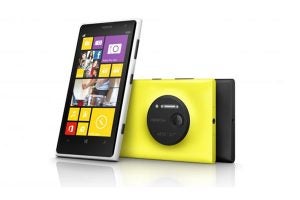
Software
Lumia 1020 – Windows Phone 8
Lumia 925 – Windows Phone 8
Lumia 920 – Windows Phone 8
All these phones use the Microsoft Windows Phone 8 software. The core of the system does not differ between the phones, and all have Nokia’s HERE mapping suite.
They all suffer from Windows Phone’s relative lack of apps too.
However, there is a special camera app that only available on the Lumia 1020, thanks to its advanced camera.
The coolest part of the Lumia 1020’s camera app is that you can zoom out from a zoomed-in photo after having shot it. This is because the camera, as standard, shoots a ‘full’-resolution photo at the same time as a more share-able 5-megapixel one.
The Lumia 1020 camera app is called Pro Camera, which gives you better control over the camera’s manual settings. You’ll find most of these options within the camera app of the 9-series phones, but they’re less easy to access in the other phones.
Nokia’s Pro Camera app lays them out as circular dials, a little like the camera app of the Samsung Galaxy Camera.
Conclusion – Which Lumia Should You Buy?
The Nokia Lumia 925 is the most accessible of these three Lumia flagship phones. This slim, it’s pretty and it doesn’t have too many features that people might label superfluous.
However, the Lumia 1020 easily has the best camera of the lot. And there’s not a great loss of any other features either. However, it costs a bunch more than the others, and for most that’ll be a pretty serious consideration.


